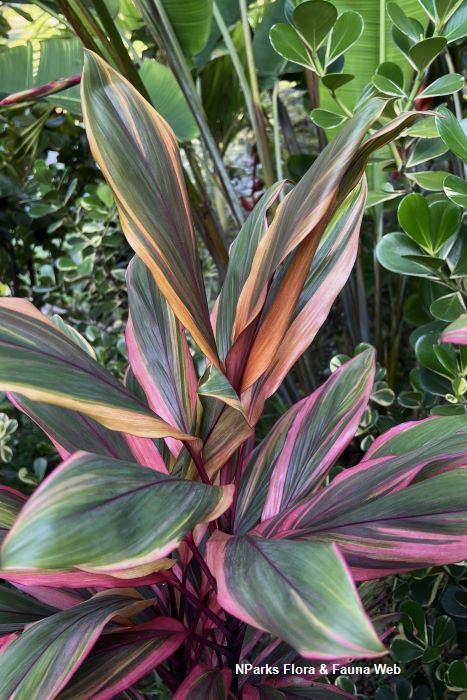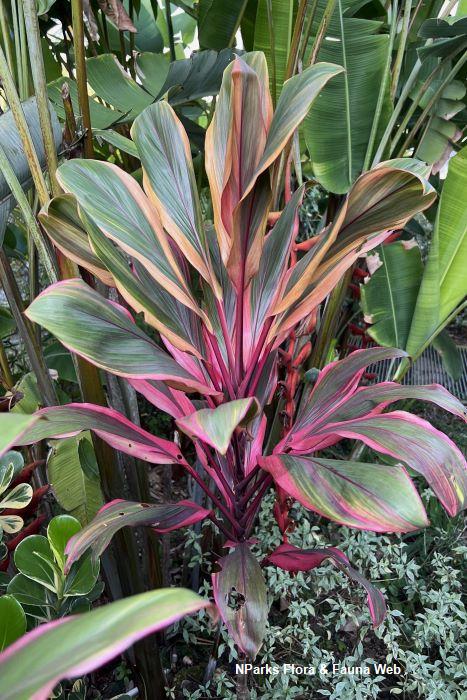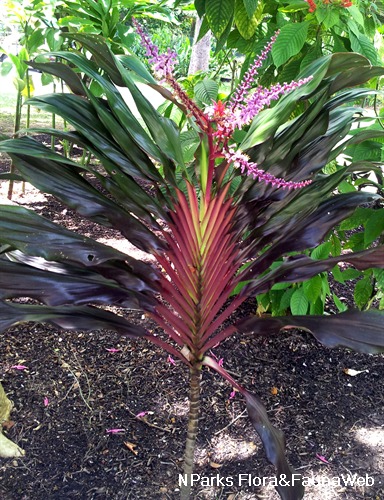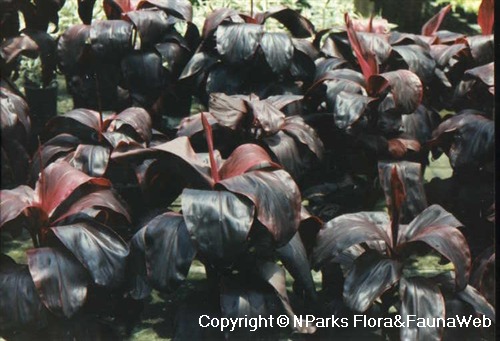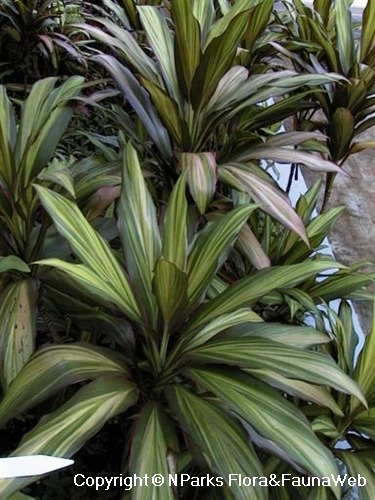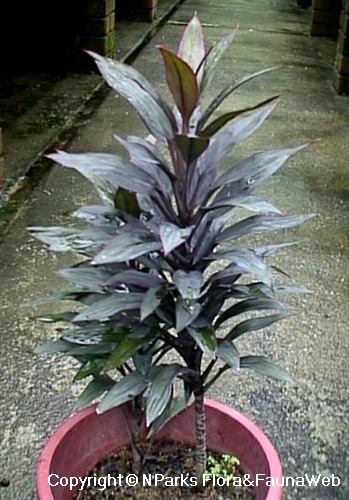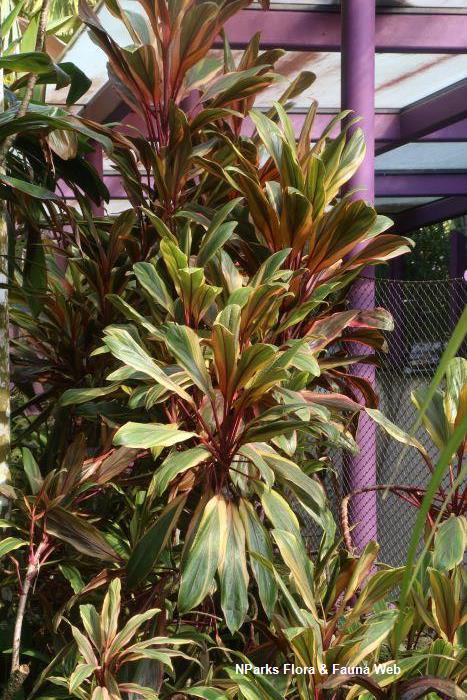
Back
Cordyline 'Early Morning Diamond'
| Family Name: | Asparagaceae |
Cordyline 'Early Morning Diamond' is an upright-growing monocot shrub, growing up to 1.5 - 3 metres tall. The leaves are brightly variegated, covered in bands and streaks of pink, purple, orange, and yellow.
Name
Classifications and Characteristics
| Plant Division | Angiosperms (Flowering Seed Plants) (Monocotyledon) |
|---|---|
| Plant Growth Form | Shrub |
| Lifespan (in Singapore) | Perennial |
| Mode of Nutrition | Autotrophic |
Biogeography
| Preferred Climate Zone | Tropical, Sub-Tropical / Monsoonal |
|---|---|
| Local Conservation Status | Non-native (Horticultural / Cultivated Only) |
Description and Ethnobotany
| Growth Form | It is an upright-growing shrub that seldom branches, reaching 1.5 - 3 m tall. |
|---|---|
| Foliage | The leaves are lance-shaped and variegated with thick, orange to dark-pink marginal bands near the base of the leaf blade; streaks of pink, purple, orange and yellow throughout the leaf blade; and a reddish-orange to dark pink petiole. New leaves are tinted with an orange overlay. |
| Stems | The stems are thick and woody. |
| Flowers | The inflorescence is a panicle, growing from the tip of the shoot. |
| Fruit | The fruit is a berry. |
| Cultivation | It grows best in moist but well-drained soil, and bright direct to indirect sunlight. It can be propagated by stem cutting. |
| Etymology | The genus Cordyline is derived from Greek kordylē, "club", referring to the club-shaped roots found in the genus. |
Landscaping Features
| Desirable Plant Features | Ornamental Foliage, Ornamental Form |
|---|---|
| Landscape Uses | Parks & Gardens, Small Gardens, Hedge / Screening |
Plant Care and Propagation
| Light Preference | Full Sun, Semi-Shade |
|---|---|
| Water Preference | Moderate Water |
| Plant Growth Rate | Fast to Moderate |
| Rootzone Tolerance | Fertile Loamy Soils, Moist Soils, Well-Drained Soils |
| Transplanting Tolerance | Good |
| Maintenance Requirements | Low |
| Pest(s) | Chewing Insects, Sucking Insects |
| Propagation Method | Stem Cutting (Semi-Hardwood) |
Foliar
| Foliage Retention | Evergreen |
|---|---|
| Mature Foliage Colour(s) | Patterned, Orange, Purple, Green, Pink |
| Mature Foliage Texture(s) | Smooth, Glossy / Shiny |
| Foliar Type | Simple / Unifoliate |
| Foliar Arrangement Along Stem | Spiral |
| Foliar Attachment to Stem | Petiolate |
| Foliar Shape(s) | Non-Palm Foliage (Lanceolate) |
| Foliar Venation | Parallel |
| Foliar Margin | Entire - Wavy / Undulate |
| Leaf Area Index (LAI) for Green Plot Ratio | 3.5 (Shrub & Groundcover - Monocot) |
Image Repository
Others
| Master ID | 32919 |
|---|---|
| Species ID | 7333 |
| Flora Disclaimer | The information in this website has been compiled from reliable sources, such as reference works on medicinal plants. It is not a substitute for medical advice or treatment and NParks does not purport to provide any medical advice. Readers should always consult his/her physician before using or consuming a plant for medicinal purposes. |



